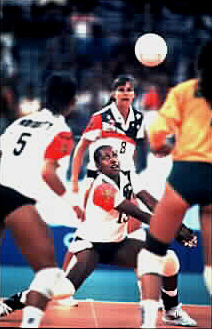![]()
 Generally it is the
television interests which command the biggest studios and the
most amount of space at the Olympic Games. Television networks
constitute the world's media leviathans, and they have often
invested hundreds of millions of dollars in their coverage of the
event and are by necessity aggressive about maximizing their
opportunity. Journalists representing radio stations have
traditionally had to accept less studio space, less-centrally
located facilities, and less-desirable vantage points for their
commentators within the arenas.
Generally it is the
television interests which command the biggest studios and the
most amount of space at the Olympic Games. Television networks
constitute the world's media leviathans, and they have often
invested hundreds of millions of dollars in their coverage of the
event and are by necessity aggressive about maximizing their
opportunity. Journalists representing radio stations have
traditionally had to accept less studio space, less-centrally
located facilities, and less-desirable vantage points for their
commentators within the arenas.
However, the advent of modern technology has recently given
this contingent of the press an unexpected advantage. At the
Barcelona Games radio broadcasters were able to rent and use
mobile phones. This gave them great mobility within the sports
installations, multiplied the points of interest they were able
to cover, and increased the speed of reporting. Many of the
broadcasters combined narration from their commentator position
and their studio in the International Broadcasting Centre with
on-the-ground reports from roving journalists via mobile
telephone, achieving a distinctive style of report that had an
edge over the kinds of commentary offered by television stations,
which occupied fixed positions. The sophistication of modern
mobile telephony systems meant that on-the-spot reports from a
telephone could be integrated with other commentary while
maintaining the highest sound quality.